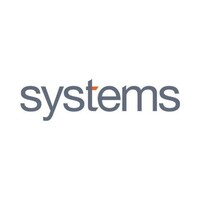Explore Top NodeJS Development Companies in South Africa

Ecosmob Technologies Pvt.ltd Verified Company
Gauteng, South Africa Head office in: India
Makes your vision a reality
Services:
We validate, design, and build powerful native mobile and web applications that drive business growth and help you achieve your goals.
Streaming never sleeps, and neither do our solutions. Embed self-managed, expert OTT/VOD dev teams into your operations to keep you full stream ahead.

Synergo Group Verified Company
Table View, South Africa Head office in: Canada
Synergo Group delivers tailored AI, cloud, and data governance solutions, reducing costs for fintech, healthcare, and compliance-driven industries
WE'RE AN INDEPENDENT CREATIVE & DEVELOPMENT STUDIO
Services:
We help visionaries turn their ideas into innovative, impactful apps with expert design, development, and strategy.

BLOKLABS S.A.R.L Verified Company
Cape Town, South Africa Head office in: Lebanon
We develop cutting-edge blockchain and software solutions that transform industries and empower businesses for the digital age.
Services:
AO Group exists to help businesses navigate their most complex business problems.

Centurion, South Africa Head office in: South Africa
Kaleidocode is a premium full-service software consultancy helping enterprises design, build, and scale software systems.
Just pointblank is no.1 cape town web design & web development company with over 15+ years of expertise as a website design agency for leading brands.
Services:
Welcome to Adequate Infosoft, your trusted partner in software development and digital innovation.

Hello Infantry Verified Company
Cape Town, South Africa Head office in: South Africa
We’re a Full-Service Digital Consultancy Seamlessly Integrating Design, Development, Marketing and Data.

MepTech Advertising Verified Company
Western Cape, South Africa Head office in: Zimbabwe
We are a web development ,social media marketing, Graphics design and an I.T company providing tailored solution for your brand and your l.T services
Services:

Cape Town, South Africa Head office in: South Africa
Business Software. Sorted.

Pretoria, South Africa Head office in: New Zealand
We specialise in cloud architecture, mobile & web development. With a global team, we help businesses thrive in the digital age.
Welcome to Flowise, your trusted partner in App Development, Software Development, and Web Development.
Services:
Welcome to the world of IEDM Digital Marketing, your primary digital marketing solutions partner in the South African market. We strive to excel in ev...
Services:

Cape Town, South Africa Head office in: South Africa
BNRY is an award-winning creative technology company with offices in Johannesburg, Cape Town and London. BNRY offers services in four divisions – Str...
We help small South African companies to grow their online presence.
Services:

Systems Limited Verified Company
Centurion, South Africa Head office in: Pakistan
Systems Limited, Pakistan's premier technology organization, excelling as pioneers of providing complex IT solutions on a global scale.

Rysun Labs Inc Verified Company
Centurion, South Africa Head office in: United States
AI, Data & Digital innovation partner for global enterprises
ManekTech South Africa specializes in Custom Software, Mobile App, and Web Development, serving as an e-commerce and Digital Marketing Agency.

Guateng, South Africa Head office in: Nigeria
Acumen Digital is a user experience design agency based in Lagos, Nigeria. We create interactive experiences and products for brands around the globe.

Sandton, South Africa Head office in: Ghana
Celeteck is a leading software development company. Based in the UK, it also operates in South Africa, Switzerland, USA, and Ghana.
Filter NodeJS Development Companies in South Africa by Cities
Find the right tech company near you or from a specific city. Some of the best companies might be located in smaller cities.
Find more NodeJS Development companies around the world
TechBehemoths is the world's most advanced and user-friendly platform to match IT Companies with real clients without hustle.
South African IT Industry: General Country Profile
The level of IT spending in South Africa is forecast to increase in 2025 at a higher pace than the economy did in 2020. Although the general state of the economy has a direct impact on the growth of the ICT sector, its customers continue to invest in technology, and the sector consistently shows a growth rate that is higher than GDP.
Cybersecurity is a high priority, with global statistics indicating that South Africa is the third most targeted country in the world for cyberattacks. Alleged IT-related procurement irregularities revealed through a number of commissions of inquiry and investigations continue to affect the reputation of some industry players. It is estimated that there are over 13,000 IT companies and over 3,000 electronics companies in South Africa, with the vast majority being small companies employing less than 50 people, according to Globe-News Wire.
Why Work With a South African IT Company
New and growing trends will provide significant opportunities for small and large players in the sector. These include growth in telecommunications, data center revenues and artificial intelligence, and the internet of things, where start-ups are expected to lead innovation. Digital transformation to improve customer experiences and online purchasing, fintech banking, blockchain, augmented reality, and virtual reality are some of the technologies that will disrupt the South African ICT industry in 2019. Improvements continue in 2025, with more than 120 million cellular mobile connections equal to 193% of the total population.
The industry is characterized by consolidation and convergence of companies within the IT sector, and between companies in the IT and telecommunications sectors.
What You Should Be Aware of When Working With South-African IT Companies
The growth projections of the IT market could be higher were it not for certain factors that seem to constrain it, including the cost sensitivity of customers, low expenditure by the public sector, market maturity, and bigger companies sourcing directly from the original equipment manufacturers.
IT market growth is also impeded by bigger companies that bypass IT vendors and go directly to OEMs for products and services. This impacts negatively on smaller companies that provide niche services within the broader IT sector.
How Reliable Are South African IT Companies
Despite the challenges facing the IT sector, its products and services have become part and parcel of everyday business and social life. The fast pace of innovation helps the sector to remain relevant while shaping the future of business and society.
How Does the South-African IT Industry Relate to the Neighboring Countries?
The South African IT market, comprising hardware, packaged software, and IT services submarkets, is regarded as one of the most developed and sophisticated within the continent. South African IT companies rank among world leaders in areas such as mobile software, electronic banking services, pre-payment, revenue management, fraud prevention systems, and the manufacture of set-top boxes, according to a report provided by the South African Department of Communications.
What is NodeJS and what are its benefits for your projects?
Node Js is a JavaScript runtime environment that allows developers to run JavaScript code on the server-side. Unlike traditional server-side technologies like PHP or Ruby, which are typically used for handling server tasks, Node.js enables developers to use JavaScript for both client-side and server-side development. Below we’ll dive deeper into the types of projects built with it, and how companies can leverage it for their projects:
Node.js is built on the V8 JavaScript engine from Google, making it incredibly fast and efficient. It uses an event-driven, non-blocking I/O model, which makes it ideal for building scalable and real-time applications. Node.js is particularly well-suited for projects that require high concurrency, such as web applications, APIs, chat applications, streaming services, and more. It has a large and active community, which has led to a rich ecosystem of libraries and packages available via npm (Node Package Manager), simplifying development tasks.
As for the type of projects that can be built using Node.js, we can name the following:
- Web Applications: Many web applications are built using Node.js, often using web frameworks like Express.js. These applications can range from small personal websites to large-scale, enterprise-level platforms.
- APIs (Application Programming Interfaces): Node.js is commonly used to create RESTful APIs that allow different services or applications to communicate with each other. This is essential for building services that provide data to mobile apps, websites, and other clients.
- Real-time Applications: Node.js is favored for real-time applications, such as chat applications, online gaming, and collaborative tools. The event-driven architecture of Node.js is well-suited for handling multiple concurrent connections.
- Streaming Services: Media streaming platforms and services that deliver audio and video content use Node.js to efficiently manage and serve media files to users.
- IoT (Internet of Things): Node.js is used in IoT projects to handle data collection from sensors and devices, process that data, and communicate with cloud services.
- Serverless Functions: Node.js is a popular choice for building serverless functions or AWS Lambda functions due to its lightweight and quick startup times.
Node.js is a versatile technology that can be effectively utilized in both smaller and larger projects, but its suitability hinges on several key factors.
For smaller projects, Node.js offers distinct advantages. Its event-driven, non-blocking I/O model allows developers to rapidly prototype and develop applications. This makes it an excellent choice for creating functional prototypes, minimum viable products (MVPs), or simple web tools swiftly.
Node.js's efficiency in handling I/O operations can lead to responsive user experiences, which is valuable for small-scale applications like personal websites, blogs, or straightforward web tools. Moreover, Node.js itself is lightweight, making it suitable for projects with minimal hardware or resource requirements. It doesn't impose significant overhead, making it a cost-effective option.
Node.js is also well-suited for serving as a backend for Single-Page Applications (SPAs), handling API requests, and serving static files efficiently. Its ability to use JavaScript both on the server and client sides can reduce development costs by enabling code reuse and a single development skill set.
For larger projects, Node.js remains a compelling choice for various reasons. Its ability to handle a large number of concurrent connections positions it favorably for projects with high traffic and user loads. It's designed to scale efficiently, allowing it to distribute workloads across multiple servers or containers, making it scalable and robust.
In larger applications with complex functionality, Node.js can be employed to build microservices that communicate efficiently with each other. This modular approach enhances maintainability and facilitates development on a larger scale.
Node.js's event-driven nature also makes it an ideal candidate for larger projects requiring real-time features. It excels in managing multiple simultaneous connections, making it suitable for applications such as messaging platforms, online gaming, or collaborative tools.
Additionally, Node.js continues to offer development speed advantages regardless of project size, which can be particularly valuable in meeting tight project deadlines.
Furthermore, for larger projects with JavaScript as the primary language on both the frontend and backend, Node.js facilitates streamlined development processes, code sharing, and collaboration among teams working on different parts of the application.










